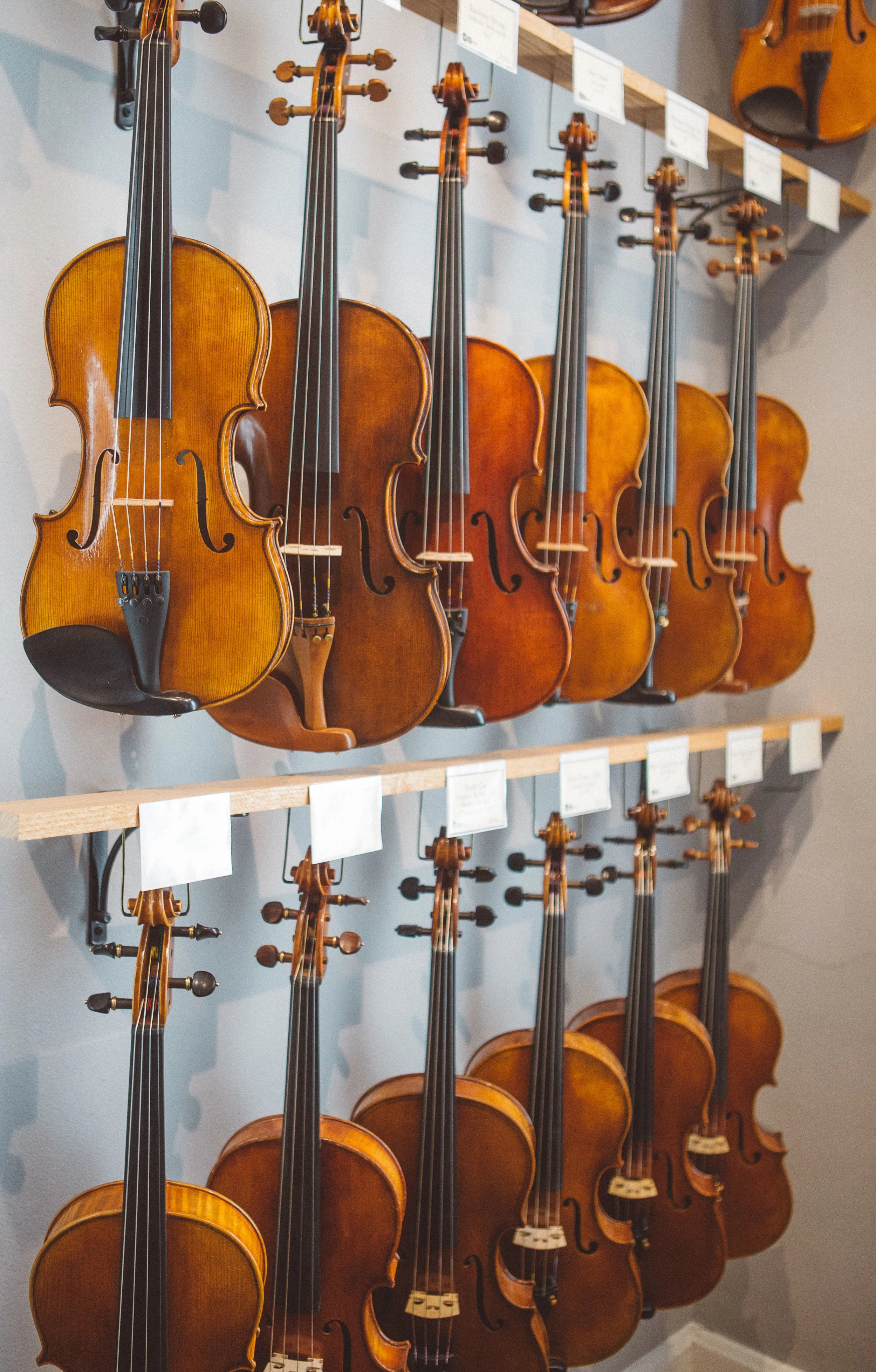HOW TO CARE FOR YOUR VIOLIN BOW
Caring for your violin bow is an essential part of maintaining the sound quality and longevity of your instrument. Proper maintenance techniques, such as regular cleaning and rosin application, can help keep your bow in good shape. It’s also important to know how often your bow should be rehaired and how to choose the right type of rosin for your specific needs.
Rehairing your bow can seem daunting; but, with the right guidance, it can be a simple and effective process. Understanding the steps involved and the factors that determine the frequency of rehairing can help you keep your bow in optimal condition. Rosin application is another important aspect of maintaining your violin bow. Understanding the best practices for applying rosin and the effects of different types of rosin on tone quality can make a significant difference to your playing. Common problems such as broken hairs and loose or tight bow hairs can also occur. Knowing how to correct these and other problems can save you time and money in the long run.
The best hair for violin bows comes from Mongolia or Siberia. The qualities of a hair violin bow include the following:
➤ Responsiveness: a bow with high-quality hair is more responsive to the player’s touch, allowing for greater control and expressiveness.
➤ Durability: high-quality horsehair is more durable and resilient, which means it can withstand heavy use without breaking or fraying.
➤ Consistency: the best horsehair is consistent in texture and length, which helps produce a consistent sound across the strings.
➤ Tone quality: a bow with high-quality hair produces a richer, more nuanced sound with greater projection and estability.
➤ Rosin retention: good horsehair holds rosin well, allowing for better string grip and reducing the need for frequent rosin reapplication.
➤ Appearance: high-quality horsehair tends to be shinier and more attractive, which can enhance the overall appearance of the bow.
You must keep in mind that the quality of the horsehair is only one factor among many that will influence the overall quality of a violin bow. The materials and craftsmanship of the bow itself, as well as the player’s technique and preferences, will also play a significant role in the sound and feel of the bow. It is important to take care of your violin bow to ensure that it produces the best possible sound and has a long life. Here are some steps you can take to care for and clean your violin bow:
➤ Rosin your bow: apply rosin to your bow once a week before playing to help the horsehair grip the strings and produce good sound.
➤ Avoid touching the hair: try to avoid touching the horsehair on the bow with your fingers, as the oils from your skin can damage the hair.
➤ Wipe the bow after playing: use a soft, clean cloth to gently wipe the bow after playing to remove rosin residue and sweat from your hands.
➤ Loosen bow after playing: after playing, loosen the bow to relieve tension on the hair and prevent the stick from warping.
➤ Store the bow properly: store your bow in a case or bow holder to protect it from dust and moisture. Avoid exposing it to direct sunlight or extreme temperatures.
➤ Clean the bow occasionally: occasionally you may need to clean your bow to remove accumulated rosin or other debris. Use a soft cloth or a very small amount of alcohol on a cotton swab to clean the stick and frog of the bow, avoiding the hair.
➤ Rehair the bow, if necessary: over time, the horsehair on your bow may wear out and it may need to be replaced (usually every 6 to 12 months, depending on use). Take your bow to a professional luthier to have it re-haired.
By following these steps, you can keep your violin bow in good condition and ensure that it produces the best possible sound. You should replace the hair on your violin bow when it becomes worn, frayed or dirty to the point where it affects the sound or playability of the bow. Here are some signs that it may be time to replace the hair on your violin bow:
➤ Loss of tension: if you find that you have to pull the bow tighter than usual to get the desired tension, this may be a sign that the hair is worn or stretched.
➤ Inconsistent sound: if you notice that your bow produces an uneven or scratchy sound, it may be due to uneven wear or dirt buildup on the hair.
➤ Hair breakage: if the hair on your bow is frequently breaking, it may be due to excessive wear or poor quality hair.
➤ Visible wear: if the hair on your bow is visibly worn, frayed or dirty.
➤ Rosin buildup: if you find that you need to apply more rosin than usual to get a good grip on the strings, it may be because the hair is dirty and unable to hold the rosin properly.
It’s important to have your bow rehaired by a professional luthier if necessary. Attempting to rehair the bow yourself could damage the bow or the hair, resulting in a poorly functioning bow.
Frequently Asked Questions
-
A violin bow is a wooden stick with horsehair stretched from end to end that is used to produce sound on a violin.
-
To tighten the hair of your violin bow, slowly turn the screw at the end of the stick clockwise; to loosen the hair, turn the screw counterclockwise.
-
Rosin is a sticky resin derived from coniferous trees that is applied to the hairs of the bow to create friction against the strings and produce sound. It is necessary to use rosin to produce a clear and even tone.
-
It is recommended to rehair your violin bow every 6 to 12 months, depending on use. Signs that your bow needs to be rehaired include less grip or slippage on the strings, or visible wear on the hair.
-
To clean your violin bow, use a soft cloth to remove any rosin dust or dirt after each use. It is important to avoid using cleaning products or water on the bow as this can damage the hairs and the stick.
-
To keep your violin bow in top condition, it is important to loosen the hairs of the bow after each use to prevent the stick from warping. Also, store your bow in a dry and cool place, inside your violin case, to avoid exposure to moisture.
-
The length of the hair on a violin bow should be approximately 2-3 inches shorter than the length of the stick.
-
Your bow is tight enough when you can press down on the hair with your index finger at the center of the stick and there is approximately the width of a pencil between the hair and the stick.
-
It is not recommended to clean the hair of your violin bow as this can damage the hair and affect the sound produced.
-
Yes, applying too much rosin to your bow can produce a scratchy or harsh sound. It is best to apply a thin, even layer of rosin before each performance and to clean any excess rosin from the strings and bow hair after each use.
Read more articles
Quick video tips
““The materials and craftsmanship of the bow itself, as well as the player’s technique and preferences, will also play a significant role in the sound and feel of the bow.” ”





























